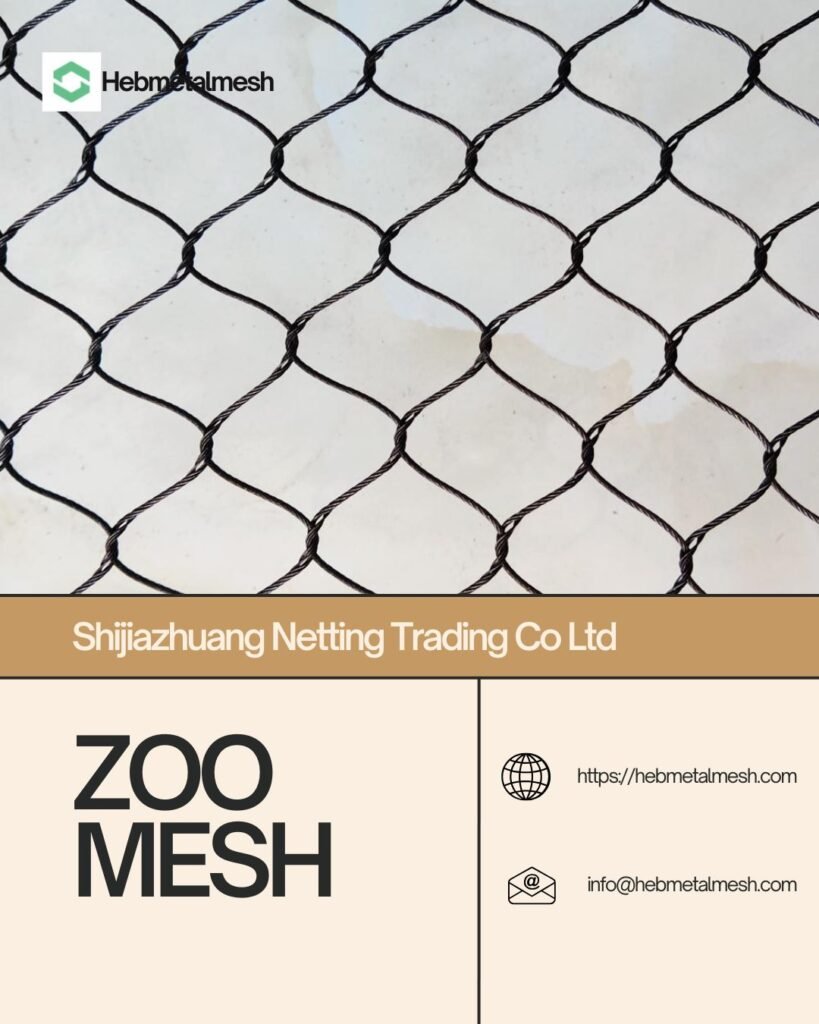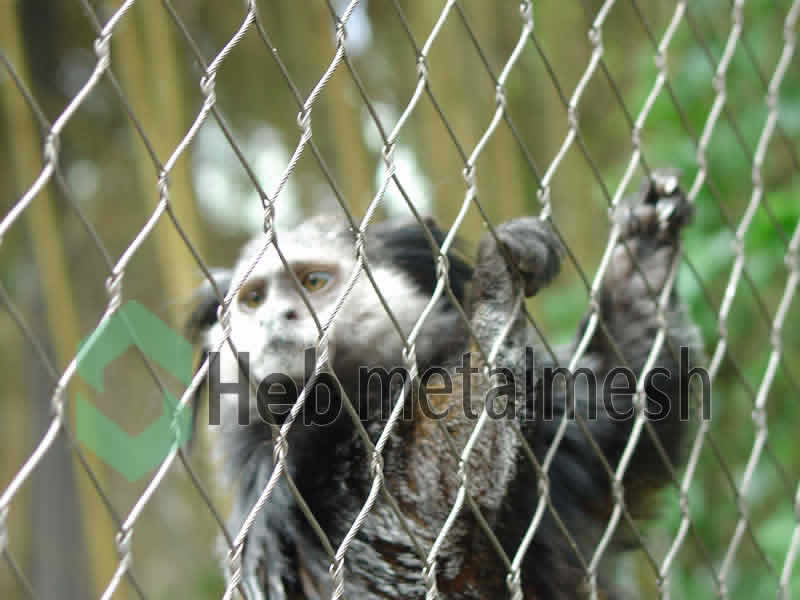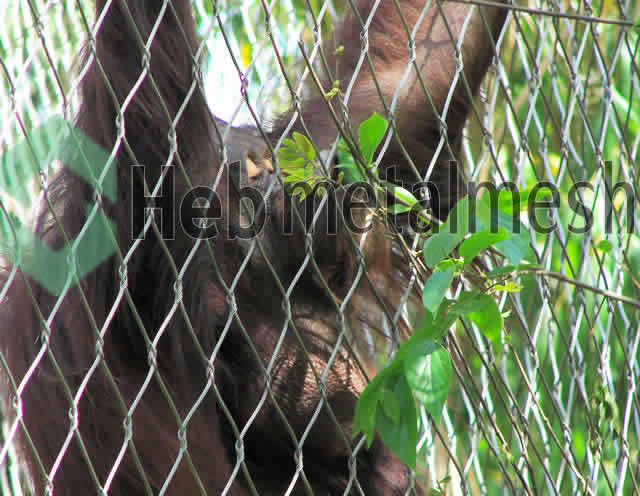Introduction to Wolf Enclosures
Wolf enclosures serve as critical habitats for these magnificent creatures, playing a vital role in wildlife preservation and education. As apex predators, wolves are not only essential to the ecosystems they inhabit but also serve as cultural symbols and representations of nature’s power and beauty. Establishing secure and well-designed enclosures is essential for exhibiting wolves responsibly, allowing the public to appreciate their grace while ensuring their safety and well-being.
The importance of wolf enclosures extends beyond mere containment; these installations are instrumental in creating a safe environment that encourages natural behaviors and social interaction among the wolves. A well-constructed enclosure not only mimics the wolves’ natural habitat but also provides educational opportunities for visitors. By offering a view into the lives of these animals, zoos and wildlife reserves foster a deeper understanding of the species, raising awareness about their conservation needs and the importance of protecting their natural habitats.
Furthermore, the design and materials used in wolf enclosures are crucial for ensuring the animals’ security and comfort. Selecting appropriate fencing materials can influence the overall success of the enclosure. The use of robust and durable options, such as handwoven zoo mesh, is increasingly recognized for its effectiveness in safeguarding wolves without hindering their ability to express natural behaviors. Such materials not only stand strong against potential threats but also provide an aesthetically pleasing barrier that enhances visitors’ experiences while observing these enigmatic animals.
As we explore the various aspects of constructing effective wolf enclosures, it becomes evident that the emotional connection fostered through responsible wildlife exhibition practices is vital. This connection is not only beneficial for conservation efforts but also for inspiring future generations to engage in environmental stewardship. Through thoughtful design and material choices, we can create spaces that honor the majesty of wolves while prioritizing their needs and the educational experiences of visitors.
The Essential Features of Effective Wolf Enclosures
Creating effective wolf enclosures requires a comprehensive understanding of several critical features that ensure the well-being of the wolves while simultaneously facilitating public engagement. Security is paramount in any animal enclosure, especially for species such as wolves that possess both strength and intelligence. A robust enclosure design must incorporate materials that are durable and escape-proof, effectively preventing unauthorized exits while protecting the wolves from potential threats. Utilizing strong materials, such as handwoven zoo mesh, can enhance the level of security in these enclosures, reducing the risk of injury or escape.
Visibility also plays a significant role in the design of wolf enclosures. Both animal welfare and public engagement rely heavily on the ability of visitors to observe the wolves in a naturalistic setting. Enclosures should be designed to minimize barriers that obstruct the view, allowing the public to appreciate the wolves’ behaviors and social structures. This not only fosters a connection between the audience and the wolves but also aids in promoting conservation awareness. Strategic placement of the enclosure within the zoo can further maximize visibility while ensuring that the animals feel secure and less stressed.
Comfort for the wolves is another essential feature that cannot be overlooked. Proper space, environmental enrichment, and suitable habitat elements must be included in the enclosure design to create a stress-free environment. The use of naturalistic materials can enhance the comfort level, allowing wolves to exhibit their natural behaviors. This is where selecting appropriate building materials like handwoven zoo mesh becomes crucial, as they can blend seamlessly into the environment while providing the functionality needed to ensure both security and comfort. By focusing on these three essential features—security, visibility, and comfort—designers can create effective wolf enclosures that uphold animal welfare standards and foster engagement with visitors.

Choosing the Right Material: An Overview
When it comes to constructing effective wolf enclosures, the selection of materials plays a vital role in ensuring the safety and comfort of these majestic creatures. Traditionally, materials such as chain-link fencing, wood, and barbed wire have been popular choices for animal enclosures. However, these options present various challenges, including durability, maintenance, and the need for regular repairs.
Chain-link fencing, while commonly used, can deteriorate over time, leading to possible weaknesses that jeopardize the animals’ safety. Additionally, its rigid design does not provide an aesthetically pleasing environment and may not offer the necessary security against determined escape attempts. On the other hand, wooden fences can warp or decay, requiring constant maintenance and replacement, which can become costly over time. Barbed wire may deter the animals from escaping, but it poses significant risks of injury to both the wolves and care staff.
Modern alternatives such as handwoven zoo mesh offer a significant improvement over traditional materials. This type of mesh is designed for enhanced durability, providing a long-lasting solution that can withstand extreme weather and various physical stresses. Furthermore, handwoven zoo mesh promotes proper ventilation and visibility, essential for the well-being of wolves in captivity. Unlike rigid materials, this flexible mesh allows for gentle containment, reducing the risk of injury while ensuring the animals have a comfortable space to thrive.
In evaluating materials for wolf enclosures, it is crucial to consider not only the immediate safety of the animals but also the longevity and maintenance needs of the chosen materials. Ultimately, investing in modern solutions like handwoven zoo mesh can lead to safer, more efficient, and more visually appealing enclosures that benefit both the wolves and the facilities that care for them.
Why Handwoven Zoo Mesh Stands Out
When constructing wolf enclosures, selecting the appropriate materials is crucial for ensuring the animals’ safety, comfort, and the aesthetic appeal of the habitat. Handwoven zoo mesh emerges as a superior choice due to its distinct benefits. Firstly, the inherent strength of this material cannot be overstated. Handwoven zoo mesh is designed to withstand the natural behaviors of wolves, who are known for their agility and power. The unique weaving technique employed enhances the tensile strength, making it resistant to tearing and providing a secure environment within which these majestic animals can roam.
Flexibility is another key attribute of handwoven zoo mesh. Unlike rigid materials such as chain link or steel, this mesh can adapt to varied shapes and sizes of enclosures. The flexibility allows for a more organic design that can closely mimic the wolves’ natural habitats. This adaptability helps in creating spaces that are not only secure but also enriched, supporting the wolves’ physical and psychological well-being. The ability to contour the mesh to different designs offers a significant advantage over traditional fencing materials, enabling designers to craft enclosures that effectively meet the wolves’ needs.
Aesthetic appeal also plays a role in the decision to use handwoven zoo mesh for wolf enclosures. This material provides a minimalist look that allows for maximum visibility, creating an immersive experience for both the wolves and the visitors observing them. The visual integration of the enclosures into the surrounding landscape enhances the overall environment, fostering a connection between guests and the animals. Ultimately, handwoven zoo mesh is a multifaceted solution that combines strength, flexibility, and beauty, making it an ideal choice for designing wolf enclosures.

Choose the better handwoven zoo mesh roll for your wolf enclosure
Material: Stainless Steel 304
Color: Black Oxide
Roll Size: 30′ x 60′
Hole: 2″ x 2″
Mesh thickness: 5/64″
The Durability of Stainless Steel 304 Wire Rope Mesh
Stainless steel 304 wire rope mesh is widely regarded for its exceptional durability and is a premier choice for constructing wolf enclosures. One of the defining characteristics of this material is its remarkable resistance to corrosion and rust, which significantly extends its lifespan when exposed to various environmental conditions. This property is particularly important in the context of enclosures, where the materials must withstand the challenges posed by weather elements, animal interaction, and general wear and tear over time.
In contrast to traditional materials like galvanized wire, which may succumb to corrosion after a few years, stainless steel 304 maintains its integrity much longer, ensuring that wolf enclosures remain secure and visually appealing. The composition of stainless steel 304 includes chromium and nickel, which provide a protective oxide layer that prevents rust from forming, thereby making it an ideal choice for outdoor applications. This added layer of durability not only contributes to the safety of the animals but also reduces the need for frequent repairs or replacements, enabling institutions to allocate their resources more efficiently.
When evaluating the long-term cost-effectiveness of materials for wolf enclosures, stainless steel 304 wire rope mesh emerges as a wise investment. Although the initial cost may be higher compared to alternative materials, its longevity reduces expenses related to maintenance and replacement over time. As a one-time investment, this resilient material ensures that animal enclosures remain secure and effective for years, thereby enhancing the overall management of wildlife facilities. In the domain of wildlife care, where the welfare of the animals is paramount, investing in high-quality materials like stainless steel 304 wire rope mesh presents both practical and financial benefits, ensuring that the enclosures fulfill their purpose reliably throughout the years.
Aesthetic Appeal – Nature and Black Oxide Finishes
When designing wolf enclosures, aesthetic appeal is a crucial element that contributes not only to the visual integration of the habitat but also to the comfort of the wolves and the experience of zoo visitors. One of the most effective materials for achieving an aesthetically pleasing enclosure is handwoven zoo mesh, available in various finishes, predominantly natural and black oxide. Each of these finishes offers distinct advantages that can significantly enhance the overall presentation of wolf enclosures.
The natural finish of handwoven zoo mesh resembles traditional materials found in the wild. This choice embodies an organic look that harmonizes well with surrounding landscapes, creating a seamless transition between the enclosure and its natural surroundings. By using this finish, enclosures can blend into the environment without disrupting the natural ambience. This approach not only benefits the aesthetic appeal but also promotes a sense of security for the wolves, as they are less likely to feel threatened by artificial structures. Visitors are drawn to the natural beauty of these enclosures, leading to a more satisfying observing experience.
In contrast, the black oxide finish provides a modern and sleek appearance that stands out within any environment. This coating enhances the durability and rust resistance of the zoo mesh while adding an element of sophistication. Black oxide finishes can create a striking visual contrast against lush greens and earthy browns, making wolf enclosures eye-catching and memorable. Such an aesthetic choice can invoke a sense of elegance and professionalism in zoo design, increasing public interest and engagement with the animals.
Both natural and black oxide finishes for handwoven zoo mesh present valuable opportunities for enhancing the aesthetic appeal of wolf enclosures. By carefully selecting the appropriate finish, enclosures can be designed to promote the well-being of wolves while also delivering an attractive sight that captivates visitors.

Long-term Investment: The Economic Benefits of Choosing Handwoven Zoo Mesh
Investing in high-quality fencing materials, such as handwoven zoo mesh, is not only beneficial for the safety and welfare of wolves in captivity but also presents significant long-term economic advantages. One of the most compelling reasons for zoos and wildlife parks to consider this type of fencing is its durability and low maintenance requirements. Unlike traditional fencing materials which may corrode, deteriorate, or require frequent repairs, handwoven zoo mesh is designed to withstand various weather conditions and resist wear, leading to lower maintenance expenditures over time.
In addition to reducing maintenance costs, handwoven zoo mesh ensures enhanced safety for both the animals and the visitors. The high visibility and secure structure of these enclosures deter escapes and support the overall welfare of wolves, contributing to a more stable environment. This added layer of assurance can attract a larger number of visitors who prioritize animal safety, potentially increasing revenue for the zoo. A secure and well-designed enclosure reflects an institution’s commitment to animal care, which can enhance its reputation and drive further educational opportunities. Zoos that invest in quality fencing demonstrate an awareness of the importance of animal habitats, which can lead to increased visitor interest and engagement in educational programs.
Moreover, the investment in effective wolf enclosures made from handwoven zoo mesh may qualify institutions for various grants and educational funding opportunities. These funds could stem from partnerships with conservation organizations that appreciate the commitment to sustainable practices and animal welfare. Such initiatives not only provide financial benefits but also enhance a zoo’s educational outreach capacity. Hence, the long-term economic implications of choosing handwoven zoo mesh extend beyond maintenance savings to encompass visitor experiences and educational revenue streams, representing a prudent investment for wildlife institutions.
Installation Tips for Your Wolf Enclosures
Installing wolf enclosures requires careful planning and consideration to ensure that they are both effective and safe for the animals. The first step in the installation process is to assess the area where the enclosure will be built. It is essential to choose a location that provides ample space as well as natural features that could enrich the wolves’ habitat, such as trees or rocky areas. The size of the enclosure should be adequate based on local regulations, which often stipulate minimum space requirements for such wildlife.
When designing your wolf enclosures, you should take into account the behavioral needs of wolves, including their need to roam, play, and explore. A well-designed enclosure might include varied terrains to simulate a natural environment. Moreover, it is vital to ensure that the enclosures are escape-proof. Using handwoven zoo mesh can provide both security and visibility, which encourages natural behaviors in wolves. This type of mesh is durable and resilient, making it ideal for withstanding the elements and the wear imposed by the animals.
Furthermore, proper installation of the handwoven zoo mesh is crucial. Begin by securely anchoring the mesh at the bottom to prevent wolves from digging out. You may also want to consider installing a secondary barrier such as a fence or wall that can work in conjunction with the mesh. Additionally, any sharp edges or seams should be smoothed out to avoid injury to the wolves. Drainage systems should also be planned in your installation to prevent water accumulation within the enclosure.
Finally, during installation, it is advisable to work closely with professionals specializing in wildlife enclosures to ensure that local guidelines and animal welfare standards are met. This collaborative approach can contribute to creating a safe and enriching environment for the wolves that will inhabit the enclosure.
Conclusion: Make the Right Choice for Your Wolf Exhibition
In evaluating the essential elements for creating optimal wolf enclosures, the significance of using handwoven zoo mesh cannot be overstated. This specialized material offers a number of benefits that elevate both the safety and welfare of the wolves housed within your facility. As discussed, handwoven zoo mesh provides superior durability compared to traditional fencing options, ensuring that the enclosures can withstand the natural behaviors and activities of these majestic animals.
The breathable qualities of handwoven materials also promote a healthier environment for the wolves, facilitating air circulation and allowing for natural sunlight exposure. This is crucial for their psychological well-being, as it mimics their natural habitat more closely than competing materials. Consequently, the investment in handwoven zoo mesh not only fosters animal welfare but also enhances the visitor experience. Observers can appreciate the beauty and behavior of wolves with a clearer view, leading to a deeper understanding and connection with the species.
Furthermore, engaging in sustainable practices by choosing handwoven options contributes positively to conservation efforts, reflecting a commitment to responsible stewardship of wildlife. Facilities that prioritize the well-being of their animals are also more likely to attract visitors who support ethical exhibitions. In turn, this can lead to increased attendance and support for your institution.
Ultimately, when creating wolf enclosures, the choice of materials plays a vital role in ensuring the health of the animals and enhancing the educational experience for audiences. By selecting handwoven zoo mesh, you invest not only in the structural integrity of the enclosure but also in the welfare and future of this remarkable species. As you contemplate your options, consider how this choice reflects your dedication to responsible and compassionate exhibitions for wolves.


